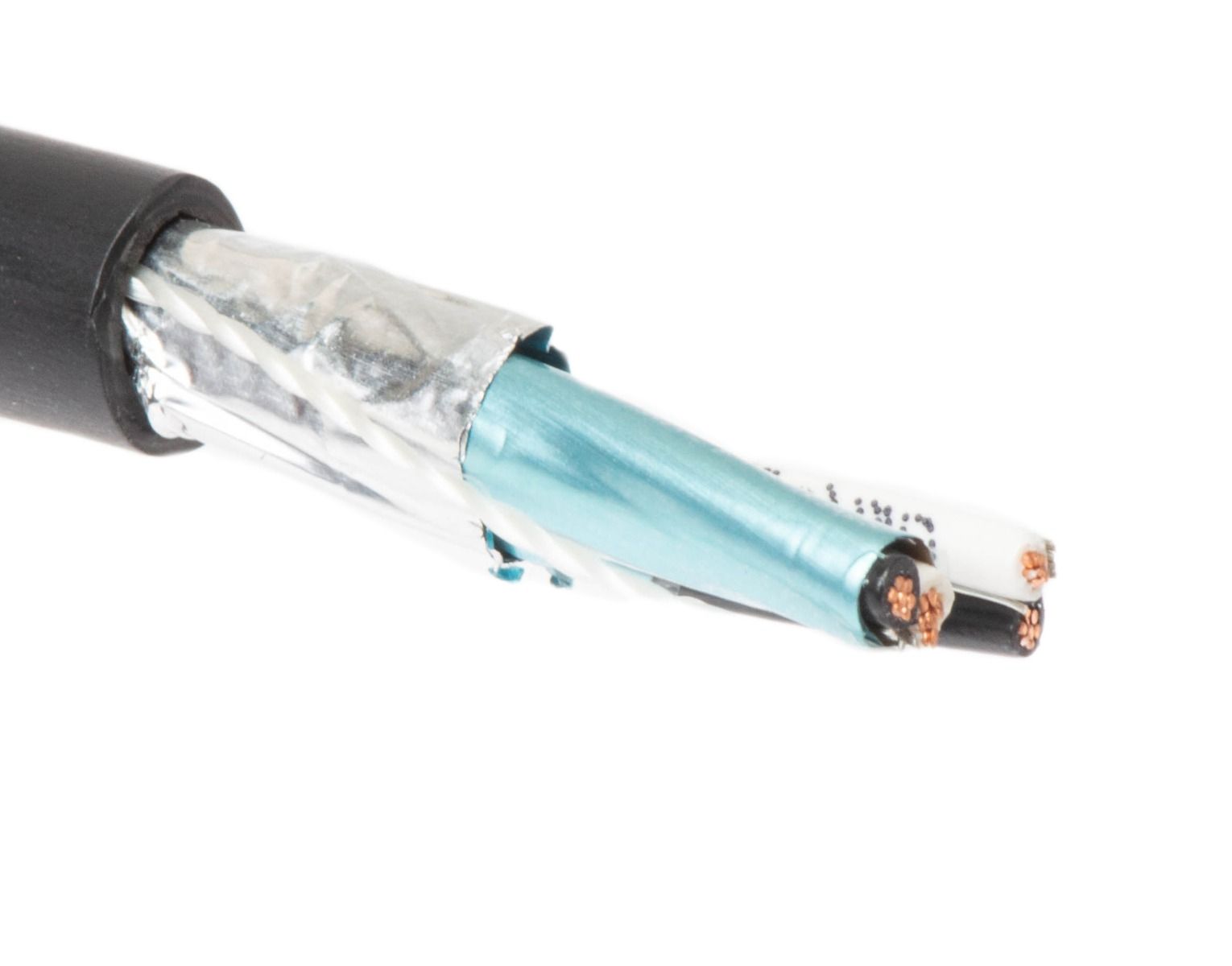hevans1944
Hop - AC8NS
If I Google "E111272 (05-21513) 18 AWG SHIELDED" this web page of results comes up. This is less than useful. We need to know exactly what kind of wire you are trying to work with. If it is truly solid and not stranded, that is a huge problem because solid wire is not very flexible, it doesn't spool and un-spool easily. All of the example cables offered by the Google search results are for stranded-wire cables, most with an aluminum foil shield around each pair and a separate drain wire for the shield. If you can, get a pair of diagonal cutters and grab a one-foot sample of the cable you are trying to drive. If there are markings on the cable, please try to include those in the sample. Strip off about four or five inches of the outer jacket to reveal the twisted pairs underneath. Splay these out and take a close-up in-focus picture of what you have. Something similar to this:... Let me give you some cable numbers. Cable is a 4 conductor shielded type. 18awg solid. Stamped info as follows: E111272 (05-21513) 18AWG SHIELDED CL 3R/FPLR (UL) OR CMR C(UL) US (06/11) RoHS 081342FT. ...

Notice the cable shown above consists of two twisted pairs, one black wire and one white wire in each pair, each wire being insulated, stranded 18 AWG copper, and each pair of the twisted-pair being covered with its own aluminum foil shield, with a third overall aluminum shield covering both pairs.
Does this look anything like what you are trying to drive video down 500 feet of? If so, you are SOL. This is low-voltage, low-frequency, instrumentation cable and it is totally unsuitable for the task. I am surprised there is anything left of the horizontal sync signal after 500 feet, much less anything left of its back porch with the six cycles of 3.58 MHz chroma sync that are needed to recover the color signal. The horizontal line rate of NTSC television is approximately 15,750 lines per second, which means there is roughly 63.5μs available on each line to transmit both the horizontal sync and blanking pulse along with the video, the latter squeezed in between successive sync pulses.
Connect an oscilloscope with at least 10 MHz bandwidth to the lipstick camera video output, and synchronize the 'scope so it triggers on a horizontal sync pulse while its linear time base is set long enough to display at least two sync pulses. You will see, between two consecutive sync pulses, the actual analog video signal that will be displayed as one intensity-modulated line (out of 525 lines) on a monitor. This is pretty much useless information presented in this form on an oscilloscope. What is useful is seeing the presence of six sinusoidal cycles of 3.58 MHz "color burst" information. These six cycles are but a sample of the continuous 3.58 MHz oscillator signal that was amplitude-modulated with in-phase and quadrature-phase components of the color portion of the video signal, and then added to the luminance (black and white) portion of the video signal to produce the composite video of a single displayed line that you see in between horizontal sync pulses.
There is no way you can see this complicated series of events occurring in real-time on your oscilloscope display. Decoding and displaying the composite video as a color moving picture is what the television monitor does. What you can do is observe the degradation in the composite video signal as it moves away from the lipstick camera and toward the color monitor, along wires that were never intended to faithfully carry this type of signal.
So, if you can, gather up the cable sample, strip off the outer insulation to reveal what is underneath, and take some well-lit, in-focus, close-up pictures and post them here. Once we know what the cable is, maybe someone here can offer you a way to drive the cable that will preserve the chroma information contained in those six cycles on the back porch of the horizontal sync signal component of the composite video.
I would also investigate using fiber-optic cable instead of copper cable if your "customer" would consider starting over. Take a look at this YouTube video to see what is possible. Google AD-net technology Taiwan for more information.


